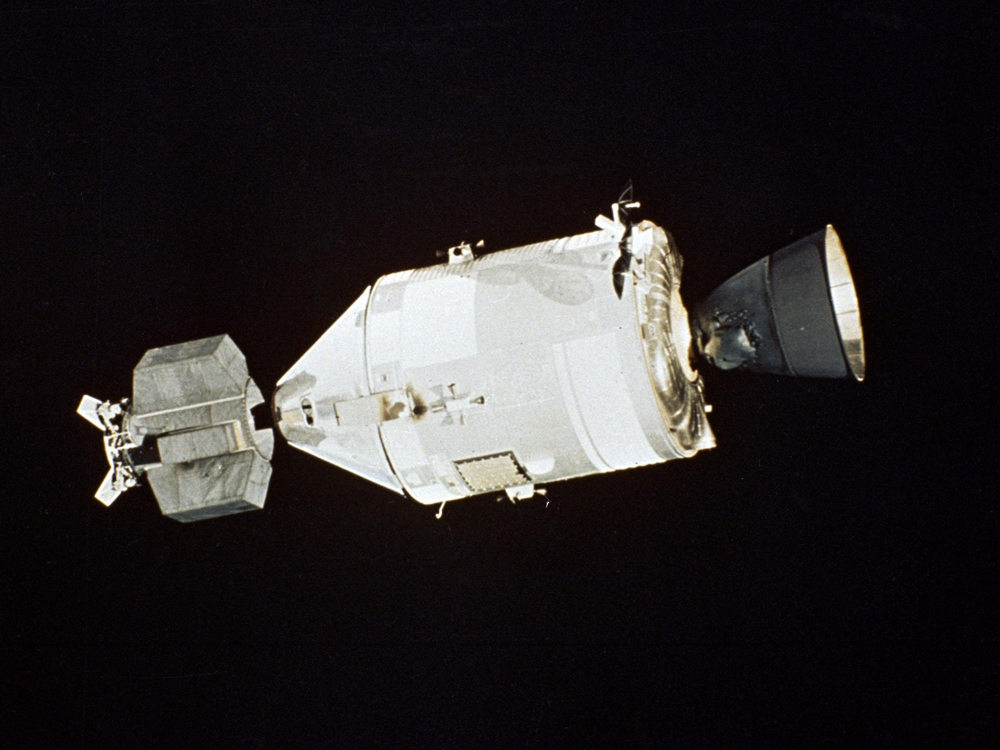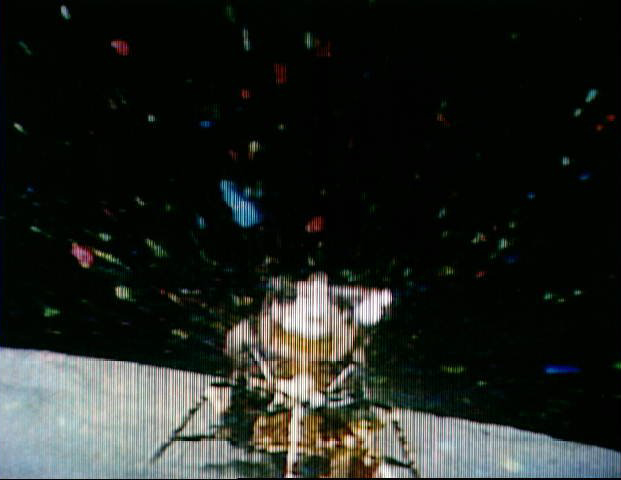Vote Now! The Best Spaceships of All Time
Apollo

The Apollo spacecraft, bound for the moon, consisted of a conical Command Module, in which the three U.S. astronauts would fly, connected to a cylindrical Service Module containing the power, propulsion, and life-support systems. They launched on the massive Saturn 5 rocket, still the largest rocket ever to carry humans into space.
Though marred by the tragedy of Apollo I (which led to many design improvements), the 10 following missions, including the first lunar landing, Apollo 11, represented one of mankind's greatest achievements. Following the final lunar mission (Apollo 17) in 1972, 3 Apollo missions were flown to Skylab, and in 1975, the Apollo-Soyuz Test Mission concluded the program.
Apollo's Lunar Module: A True Spaceship

Intimately bound up with the Apollo craft is the two-stage Lunar Module, the first true spaceship designed free of aerodynamic concerns. With its unmistakable spindly-legged aspect and angular design, the Lunar Modules are the only spacecraft to date that have ferried astronauts down to the surface of the moon and back into space.
In all, six Lunar Modules touched down on the moon's surface, each with a two-man crew. The moon landers were given separate names from their Apollo command module counterparts. The historic Apollo 11 Lunar Module was dubbed "Eagle."
When it came time to leave the moon, the upper stage of the Lunar Module launched into lunar orbit, leaving its spidery landing module on the moon's surface as seen here, when the Apollo 16 module left the moon in 1972.
Join our Space Forums to keep talking space on the latest missions, night sky and more! And if you have a news tip, correction or comment, let us know at: community@space.com.
Get the Space.com Newsletter
Breaking space news, the latest updates on rocket launches, skywatching events and more!

Space.com is the premier source of space exploration, innovation and astronomy news, chronicling (and celebrating) humanity's ongoing expansion across the final frontier. Originally founded in 1999, Space.com is, and always has been, the passion of writers and editors who are space fans and also trained journalists. Our current news team consists of Editor-in-Chief Tariq Malik; Editor Hanneke Weitering, Senior Space Writer Mike Wall; Senior Writer Meghan Bartels; Senior Writer Chelsea Gohd, Senior Writer Tereza Pultarova and Staff Writer Alexander Cox, focusing on e-commerce. Senior Producer Steve Spaleta oversees our space videos, with Diana Whitcroft as our Social Media Editor.
